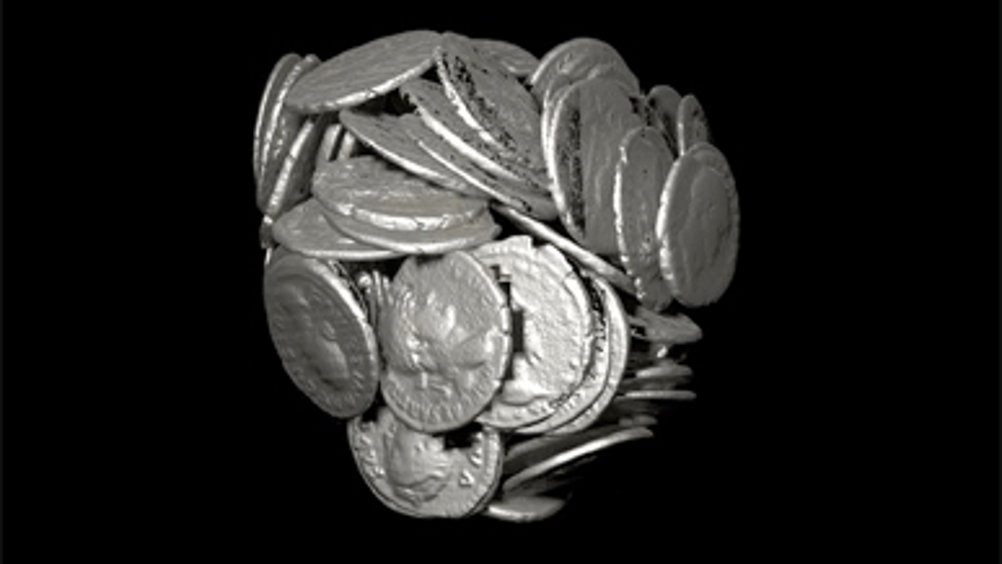Researchers use X-rays to examine buried Roman coins
Engineers and archaeologists from Southampton University are collaborating with the British Museum to examine buried Roman coins using X-ray imaging technology.

Originally designed for the analysis of engineering parts, such as jet turbine blades, the scanning equipment at Southampton’s µ-VIS Centre for Computed Tomography is being used to examine Roman coins buried in three archaeological artefacts from three UK hoards.
According to the university, the centre’s equipment can scan inside objects, rotating 360º while taking thousands of 2D images, which are then used to build detailed 3D images. In the case of the coins, the high-energy/high-resolution combination of the Southampton facilities allows them to be examined in detail without the need for physical excavation or cleaning.
For those recently scanned at Southampton, it has been possible to use 3D computer visualisation capabilities to read inscriptions and identify depictions of emperors on the faces of the coins.
Southampton University archaeologist Dr Graeme Earl said: ‘Excavating and cleaning just a single coin can take hours or even days, but this technology gives us the opportunity to examine and identify them quickly and without the need for conservation treatment at this stage. It also has potential for examining many other archaeological objects.
Register now to continue reading
Thanks for visiting The Engineer. You’ve now reached your monthly limit of news stories. Register for free to unlock unlimited access to all of our news coverage, as well as premium content including opinion, in-depth features and special reports.
Benefits of registering
-
In-depth insights and coverage of key emerging trends
-
Unrestricted access to special reports throughout the year
-
Daily technology news delivered straight to your inbox










Water Sector Talent Exodus Could Cripple The Sector
Well let´s do a little experiment. My last (10.4.25) half-yearly water/waste water bill from Severn Trent was £98.29. How much does not-for-profit Dŵr...